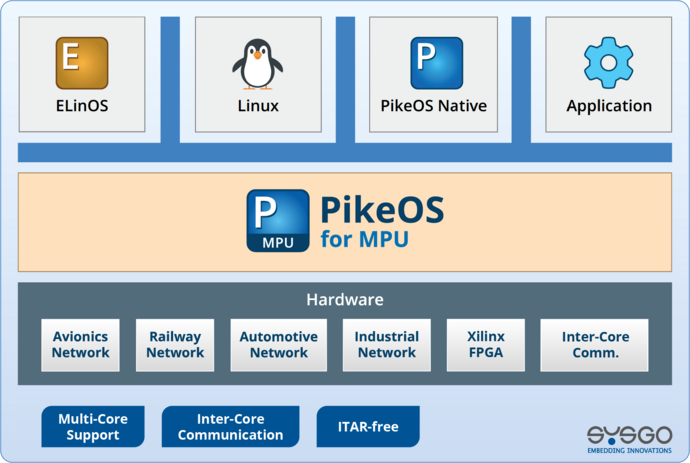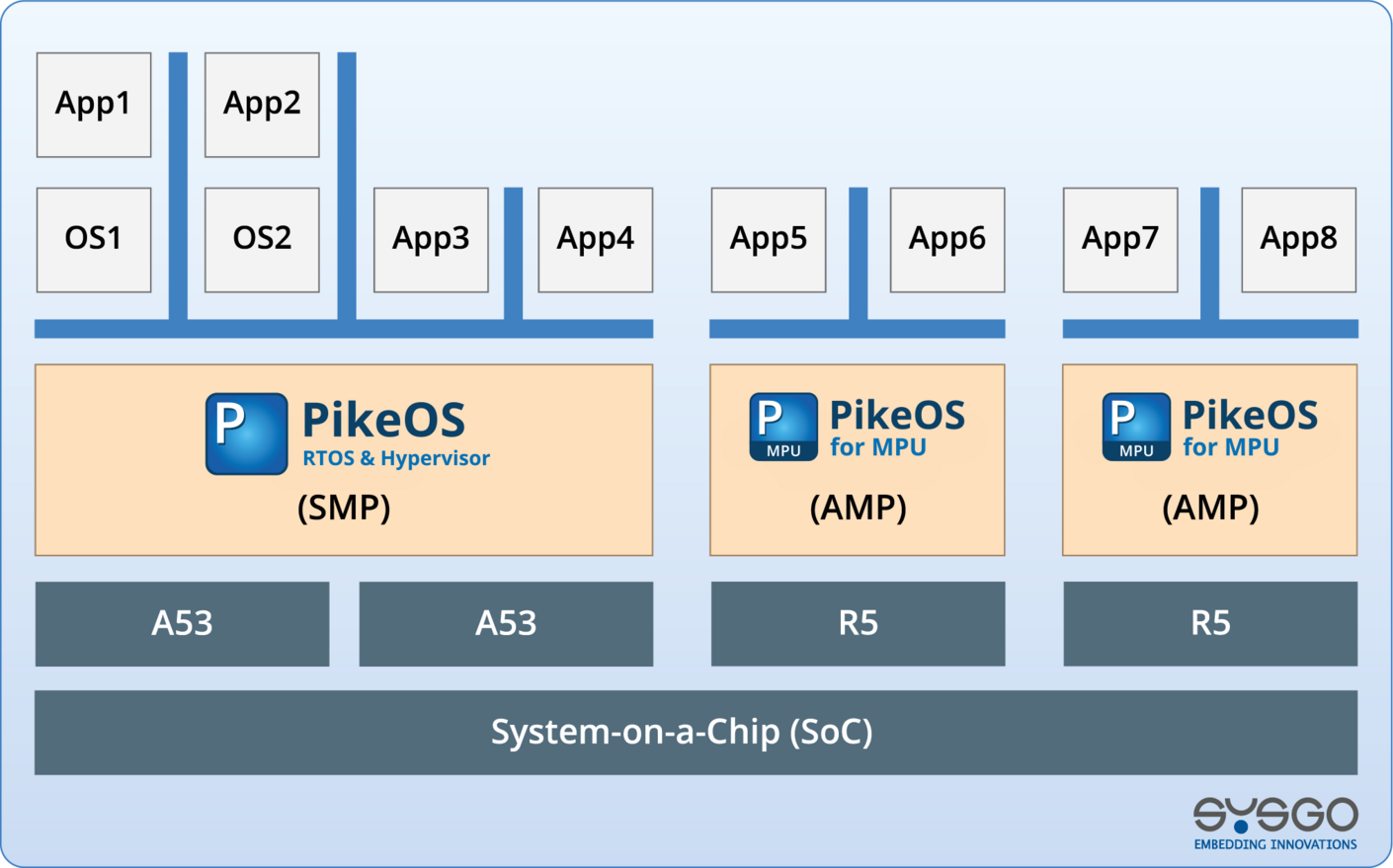Application Separation
PikeOS offers strict partitioning and strong separation to provide built-in Security by design
Hardware Consolidation
Extreme flexibility provides independence from suppliers in the choice of hardware architectures
Use of COTS
The benefit of using Commercial-Off-The-Shelf (COTS) components is to lower overall costs for applications
PikeOS Compatibility
+80% of the original code base makes the available PikeOS documentation and certification artefacts reusable
Inter-Core Communication
PikeOS instances on different cores can communicate with each other via message-based communication channels
ITAR-free
As European company, our products have no export restrictions enabling unrestricted global deployment
Certifiable MPU and MMU Cores
When using heterogeneous SoC (Systems-on-a-Chip) customers can profit from one PikeOS IDE for the configuration of certifiable MPU and MMU cores
Avionics Customers
Avionics customers can benefit from the ARINC 653, Part 1 compliant configuration
Space Applications
PikeOS for MPU supports less complex hardware which mitigates SEU effects. Great for SPACE applications
Automotive Market
Support for systems with heterogeneous processor core such as the Xilinx Ultrascale+ which is widely used within the Automotive market
Safety & Security Bulletins / Patches
PikeOS for MPU offers Safety & Security bulletins / patches. Step by step, we enlarge Security add-on technologies, such as TSL, SSL or encryption libraries to help making systems more secure
PikeOS Native API
Enhanced PikeOS native API allows migration from software running on proprietary operating systems as well as usage of open-source projects
ITAR-free
Our products are not subject to U.S. ITAR (International Traffic in Arms Regulations), reducing export restrictions and simplifying global deployment








